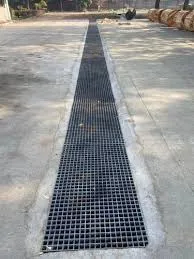
-
 Afrikaans
Afrikaans -
 Albanian
Albanian -
 Amharic
Amharic -
 Arabic
Arabic -
 Armenian
Armenian -
 Azerbaijani
Azerbaijani -
 Basque
Basque -
 Belarusian
Belarusian -
 Bengali
Bengali -
 Bosnian
Bosnian -
 Bulgarian
Bulgarian -
 Catalan
Catalan -
 Cebuano
Cebuano -
 China
China -
 China (Taiwan)
China (Taiwan) -
 Corsican
Corsican -
 Croatian
Croatian -
 Czech
Czech -
 Danish
Danish -
 Dutch
Dutch -
 English
English -
 Esperanto
Esperanto -
 Estonian
Estonian -
 Finnish
Finnish -
 French
French -
 Frisian
Frisian -
 Galician
Galician -
 Georgian
Georgian -
 German
German -
 Greek
Greek -
 Gujarati
Gujarati -
 Haitian Creole
Haitian Creole -
 hausa
hausa -
 hawaiian
hawaiian -
 Hebrew
Hebrew -
 Hindi
Hindi -
 Miao
Miao -
 Hungarian
Hungarian -
 Icelandic
Icelandic -
 igbo
igbo -
 Indonesian
Indonesian -
 irish
irish -
 Italian
Italian -
 Japanese
Japanese -
 Javanese
Javanese -
 Kannada
Kannada -
 kazakh
kazakh -
 Khmer
Khmer -
 Rwandese
Rwandese -
 Korean
Korean -
 Kurdish
Kurdish -
 Kyrgyz
Kyrgyz -
 Lao
Lao -
 Latin
Latin -
 Latvian
Latvian -
 Lithuanian
Lithuanian -
 Luxembourgish
Luxembourgish -
 Macedonian
Macedonian -
 Malgashi
Malgashi -
 Malay
Malay -
 Malayalam
Malayalam -
 Maltese
Maltese -
 Maori
Maori -
 Marathi
Marathi -
 Mongolian
Mongolian -
 Myanmar
Myanmar -
 Nepali
Nepali -
 Norwegian
Norwegian -
 Norwegian
Norwegian -
 Occitan
Occitan -
 Pashto
Pashto -
 Persian
Persian -
 Polish
Polish -
 Portuguese
Portuguese -
 Punjabi
Punjabi -
 Romanian
Romanian -
 Russian
Russian -
 Samoan
Samoan -
 Scottish Gaelic
Scottish Gaelic -
 Serbian
Serbian -
 Sesotho
Sesotho -
 Shona
Shona -
 Sindhi
Sindhi -
 Sinhala
Sinhala -
 Slovak
Slovak -
 Slovenian
Slovenian -
 Somali
Somali -
 Spanish
Spanish -
 Sundanese
Sundanese -
 Swahili
Swahili -
 Swedish
Swedish -
 Tagalog
Tagalog -
 Tajik
Tajik -
 Tamil
Tamil -
 Tatar
Tatar -
 Telugu
Telugu -
 Thai
Thai -
 Turkish
Turkish -
 Turkmen
Turkmen -
 Ukrainian
Ukrainian -
 Urdu
Urdu -
 Uighur
Uighur -
 Uzbek
Uzbek -
 Vietnamese
Vietnamese -
 Welsh
Welsh -
 Bantu
Bantu -
 Yiddish
Yiddish -
 Yoruba
Yoruba -
 Zulu
Zulu
Durable and Lightweight Solutions for FRP Manhole Covers in Urban Infrastructure
The Rise of FRP Manhole Covers A Modern Solution for Urban Infrastructure
In the realm of urban infrastructure, few elements are as ubiquitous yet often overlooked as manhole covers. Traditionally crafted from heavy materials like cast iron or concrete, these everyday fixtures have recently seen a shift towards innovative materials, with Fiber Reinforced Polymer (FRP) manhole covers emerging as a game-changing solution. The development and adoption of FRP manhole covers represent a significant leap in engineering, addressing both performance and sustainability concerns in urban management.
What is FRP?
Fiber Reinforced Polymer (FRP) is a composite material that consists of a polymer matrix reinforced with fibers, typically glass or carbon. This combination provides remarkable strength-to-weight ratios, corrosion resistance, and durability, making FRP an ideal choice for various applications, including manhole covers. The lightweight nature of FRP allows for easier installation and maintenance, reducing labor costs and time significantly compared to traditional materials.
Advantages of FRP Manhole Covers
1. Lightweight and Durable One of the standout features of FRP manhole covers is their lightweight design. Weighing significantly less than conventional options, they are much easier to handle. This is especially beneficial for cities with aging infrastructure that require frequent maintenance. The durability of FRP also means these covers have a longer lifespan, resisting wear from heavy traffic, harsh environmental conditions, and corrosion.
2. Corrosion Resistance Unlike traditional materials, FRP does not rust or corrode, making it suitable for locations with high levels of moisture or exposure to chemicals. This resistance ensures that FRP manhole covers maintain their structural integrity over time, reducing the need for costly replacements and repairs.
3. Safety Features FRP manhole covers can be designed with enhanced safety features, such as non-slip surfaces and reflective markings. These elements significantly reduce the risk of accidents, especially in low visibility conditions. Furthermore, the material can be molded into different colors, increasing visibility for both pedestrians and drivers.
frp manhole cover

4. Sustainability The global push for sustainable practices in urban development has brought FRP materials into the spotlight. FRP can be manufactured with recycled materials and is itself recyclable, reducing the environmental impact associated with traditional manhole covers. The production process of FRP also tends to consume less energy compared to metal counterparts, contributing to a lower carbon footprint.
5. Versatile Design Options FRP manhole covers can be customized to meet specific design requirements. They can be manufactured in various shapes, sizes, and load ratings, allowing engineers to create manhole covers tailored exactly to the needs of a particular application. This versatility is an attractive feature for urban planners seeking to enhance the aesthetic appeal of their city.
Challenges and Considerations
Despite their many advantages, the adoption of FRP manhole covers is not without challenges. Concerns regarding the initial costs can hinder some municipalities from making the switch. While FRP may have a higher upfront price compared to traditional materials, the long-term savings associated with lower maintenance and longer lifespan often outweigh these initial expenses.
Additionally, there is a need for increased awareness and education surrounding FRP technology among city planners and engineers. As FRP manhole covers are a relatively new product in the field of urban infrastructure, further studies and successful case implementations are needed to demonstrate their viability and efficiency on a larger scale.
Conclusion
FRP manhole covers represent a forward-thinking solution to the needs of modern urban infrastructure. Their lightweight, durable, and sustainable characteristics position them as a desirable alternative to traditional manhole covers. As cities continue to face challenges related to maintenance costs, safety, and environmental impact, embracing innovations such as FRP technology will be crucial. By investing in advanced materials like FRP, municipalities not only enhance the functionality and safety of their infrastructure but also contribute to the overall sustainability of urban environments. The future of manhole covers is indeed looking brighter, thanks to FRP solutions.









